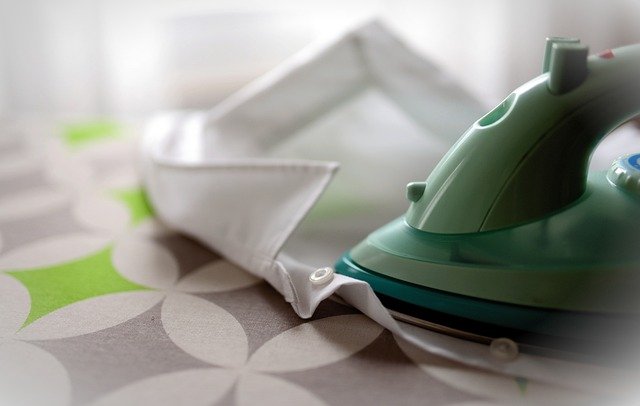Steam Iron Guide for Clothes, Fabric, and Wrinkles
A steam iron is a household tool that combines heat and moisture to smooth textiles quickly and reliably. Used correctly, it keeps garments presentable, extends the usable life of many fabrics, and makes care routines faster. This guide explains how a steam iron works, how to prepare clothes, when steam is helpful, how different fabric types respond, and practical techniques to remove wrinkles safely, with attention to common issues like scorch marks, water stains, and fabric care labels.

How does an iron work?
A steam iron heats a metal soleplate to a controlled temperature and releases water vapor through small holes. The heat relaxes fiber bonds while steam adds moisture that softens them, allowing wrinkles to flatten under light pressure. Modern irons include thermostats, steam controls, and anti-drip systems to reduce spotting. Features like ceramic or stainless-steel soleplates affect glide and durability, and a steam burst or vertical-steam mode helps with hanging garments. Understanding these basic functions helps you choose settings that match fabric types and avoid damage.
Preparing clothes before ironing
Start by checking care labels for temperature recommendations and any cautions about steam. Sort garments by recommended heat level—cotton and linen tolerate higher temperatures, while synthetics like polyester require lower heat. If an item is very wrinkled, slightly dampening it with a spray bottle or using the iron’s steam function can improve results. Empty pockets, fasten buttons, and lay clothes flat on a clean ironing board or towel to create a smooth surface. For delicate trims or prints, place a thin pressing cloth between the iron and fabric to prevent shine or transfer.
When and why to use steam
Steam accelerates wrinkle removal by relaxing fibers, so it’s especially useful for natural fibers and heavier fabrics. Use continuous steam for ordinary wrinkles and short bursts for stubborn creases. Vertical steaming is effective for curtains, suits, and hanging dresses; hold the iron a short distance away to avoid wetting the fabric. Avoid excessive steam on delicate fabrics like silk or rayon—test on an inconspicuous area first. If your iron has an anti-calcium or demineralizing feature, use distilled water where recommended to reduce deposits that can reduce steam performance.
Working with different fabric types
Different fabrics need different approaches. Cotton and linen often require high heat and generous steam; press firmly and use steam to tackle deep creases. Wool benefits from medium heat and a pressing cloth to protect fibers—pressing rather than sliding prevents shine. Synthetic fibers like polyester, nylon, and acrylic need low heat and minimal steam; iron quickly and avoid prolonged contact. Silk and embellished fabrics usually need the lowest heat and a protective layer between the iron and fabric. Always test settings on a seam allowance or inside hem before ironing the main surface.
Techniques to remove wrinkles safely
For flat garments, iron from the inside where possible to protect the exterior. Move in straight, short strokes and lift the iron rather than drag it to avoid stretching or distorting fabric. Use the steam burst for tight areas like collars and cuffs, and roll sleeves onto the board to iron them flat without creating new creases. For persistent wrinkles, place a damp cotton cloth over the area and press; the additional moisture and insulation can help. To prevent water spotting, keep the iron moving and use anti-drip settings at lower temperatures. Regular cleaning of the soleplate and descaling the reservoir maintains consistent performance.
A final note on common issues: if you see shine on dark fabrics, reduce heat and use a pressing cloth; if scorch marks appear, stop immediately and assess fabric label instructions; some stains from overheated fibers may be permanent. Routine care—storing garments on hangers, smoothing fabric after washing, and using appropriate heat settings—reduces the need for heavy ironing.
Steam irons are versatile tools when used with attention to fabric care labels and proper technique. With basic knowledge of how heat and moisture interact with textile fibers, you can remove wrinkles efficiently while protecting clothes and extending their wearable life.





